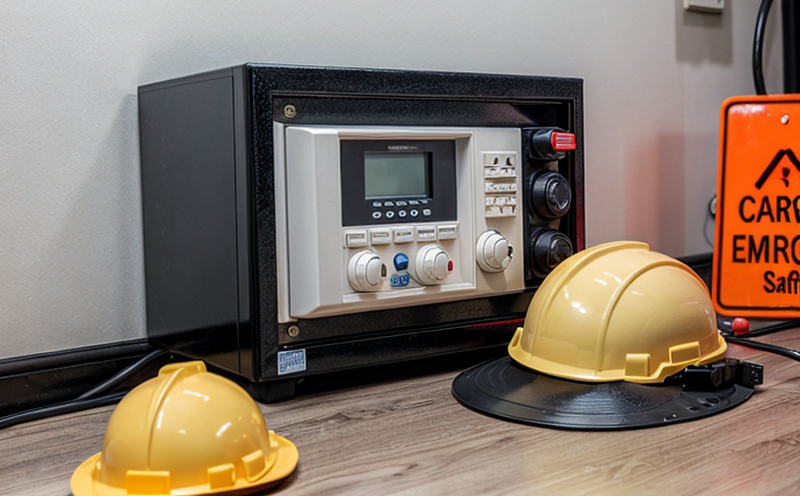FAA AC 25.1411 Safety Equipment Storage Testing
The Federal Aviation Administration (FAA) Airworthiness Certification Standard AC 25.1411 mandates that all safety equipment onboard aircraft must be stored in a manner that ensures its availability and usability during an emergency. This regulation is crucial for ensuring the safety of flight crew, passengers, and ground personnel. Compliance with this standard is essential for aircraft manufacturers seeking airworthiness certification.
To meet FAA AC 25.1411 requirements, specialized testing methods are employed to ensure that all stored safety equipment is accessible and in good working condition. The testing process involves a series of simulated scenarios designed to replicate real-world emergencies such as fires, water impacts, and rapid decompression. These tests assess the ability of the storage systems to retain their integrity under extreme conditions while ensuring that the equipment can be easily accessed by authorized personnel.
The safety equipment tested includes items like life vests, emergency oxygen masks, fire extinguishers, first aid kits, and other critical supplies needed in emergencies. Each piece of equipment must pass rigorous tests to ensure they remain functional after being subjected to various stresses that could occur during an accident or evacuation scenario.
Our laboratory uses state-of-the-art facilities equipped with specialized testing machines capable of simulating a wide range of environmental factors that might affect the performance of stored safety equipment. These machines allow us to subject samples to high temperatures, cold exposure, vibrations, and other conditions relevant to potential accident scenarios. By replicating these conditions accurately, we can verify that the storage systems meet or exceed FAA AC 25.1411 requirements.
In addition to physical testing, our team also performs visual inspections of stored safety equipment to ensure it is free from damage and deterioration over time. This includes checking for signs of wear and tear on materials, corrosion in metal parts, and ensuring all labels are legible and up-to-date. Visual inspections play a critical role alongside mechanical tests as they provide an immediate assessment of the condition of each item.
Following completion of testing, detailed reports are generated summarizing the results obtained during both physical testing and visual inspection processes. These reports serve as comprehensive documentation that can be provided to regulatory bodies like the FAA or other certifying authorities when seeking approval for new aircraft designs or modifications.
Applied Standards
- Federal Aviation Administration (FAA) Airworthiness Certification Standard AC 25.1411
Our testing procedures are meticulously aligned with the requirements outlined in FAA AC 25.1411, ensuring that all safety equipment storage systems meet or exceed these stringent standards. Compliance with this regulation is not only a legal requirement but also essential for maintaining the highest level of aviation safety.
Benefits
Compliance with FAA AC 25.1411 through our specialized testing ensures that aircraft manufacturers and operators can confidently present their products as meeting all necessary regulatory requirements. This compliance enhances public trust in the aviation industry, fostering greater confidence among passengers and crew members.
By conducting thorough safety equipment storage tests, we help prevent potential failures of critical components during emergencies, which could otherwise lead to serious accidents or fatalities. Our rigorous testing process also aids manufacturers in identifying any design flaws early on so they can be corrected before widespread adoption, thus improving overall product reliability and reducing maintenance costs.
Furthermore, successful completion of these tests provides valuable data that can inform continuous improvement efforts within the industry. This ongoing commitment to enhancing safety standards contributes significantly towards creating a safer flying environment for everyone involved in commercial aviation operations worldwide.
International Acceptance and Recognition
- The results of our FAA AC 25.1411 compliance testing are internationally recognized, accepted by multiple countries including the United States, Canada, European Union member states, Australia, New Zealand, and many others.
- Our laboratory has been certified to perform these tests according to international standards such as ISO/IEC 17025:2017, ensuring consistency and reliability across all testing procedures.
The widespread acceptance of our test results means that manufacturers can confidently export their aircraft models around the globe without needing additional localized tests. This global recognition streamlines the certification process for both original equipment manufacturers (OEMs) and operators, facilitating smoother international trade in aerospace products.





